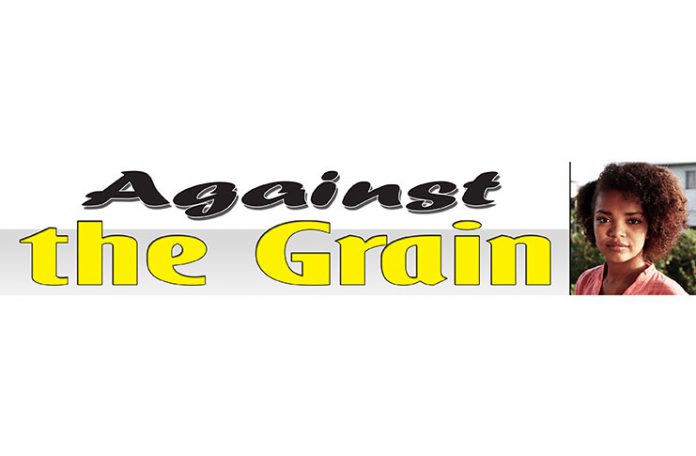Source: guyanachronicle.com

“We are still identified by many countries as a transition point for narcotic drugs. Therefore, we have to ensure that the way the world sees us is not as a narcotic state and we have to be very careful about how we are branded-” Joseph Harmon.
THOSE words were uttered by Minister of State Joseph Harmon a few weeks ago, concerning the issue of Hemp cultivation in Guyana. At face value, Harmon’s words seem reasonable. It is no secret that Guyana has a bad history and image when it comes to narcotics. As a developing nation, it is definitely something we should attempt to stamp out, as idealistic as this may be. However, in our urgency to refine and cleanse our “branding,” the Government is falling victim to its own naivety. Who exactly are we waiting on to give us the go-ahead to produce hemp? Is it the same countries that have already decriminalised it and are profiting billions of dollars or are we still waiting on Brother Sam to tell us when and how high we must jump?
There is always a bit of confusion when it comes to industrial hemp. Many get confused because they mistakenly identify it as the strain of cannabis used for recreational and medicinal purposes. It is understandable where this confusion comes in; after all, both plants are from the cannabis family. However, there are major differences and one should be aware of them. Firstly, we need to understand that Cannabis has three strains, Cannabis Ruderalis, Cannabis Indica and Cannabis Sativa and in my opinion, all three should be decriminalised.
Cannabis Ruderalis is grown wild and is mainly used for its birdseed and oil. It is considered the intermediate type between Indica and Sativa. What it also does is provide food and a habitat for birds. What we popularly know as marijuana or “weed,” comes from Cannabis Indica. This of course is grown for its high levels of THC, which has psychoactive effects. The levels of THC in this strain can run from 2 and up. Then, there is Cannabis Sativa, otherwise known as industrial hemp, which is grown not for recreational uses, but for its fibre.
This strain has THC levels below 0.3 percent and higher levels of CBD, than Indica and Ruderalis, which block the effects of THC. For any recreational or medicinal use, you need higher levels of THC,at least 2 per cent. What this essentially means is that if one tries to smoke hemp, you would not get high from it, unless of course you have the patience to smoke two buckets at a time. It is an agricultural crop and nothing more. The list of products hemp can be used for is exhaustive. With close to 30,000 uses such as health-food products, body-care products, detergent, medicines and paper, building materials, paint, varnish, ink, ethanol fuel production, clothing and lubricating oils.
All of the developed countries, excluding the United States have established hemp as an agricultural crop. In that same breath, it should be noted that the U.S. is the largest importer of hemp products, with an estimated market of $600 million per year. Over 30 countries have grown and continue to grow hemp. Amongst these are: China, Russia, Korea, Canada, Australia, Great Britain and France. The European Union currently certifies 26 varieties of cannabis sativa with low THC, while France and China remain the world’s top hemp producers with 71% and 24% respectively.
Obviously, hemp does more good than harm, so why is it illegal? Well, as with many of the asinine laws we have today, someone’s vested interest made it so and in this case, it was the disinformation spun by the Hearst and DuPont families. With large forest holdings that would have been threatened by the legality of hemp, Hearst, through newspaper articles, led the populace to believe that there was no difference between marijuana and industrial hemp. Meanwhile, DuPont’s interest in having hemp be illegal had to do with their newly developed plastics at the time. Hemp can be used as an alternative to plastic, as it has many environmental and economic advantages over them.
This misinformation has never really subsided since the prohibition era, but the more we learn about hemp, the more we must begin to ask ourselves why we are still so reluctant to use it. If we cannot come up with a better argument than we need to control our image to the world, then do we truly understand hemp? Do we know of the differences between it and marijuana? Do we know of its miniscule amount of THC? Do we know of its economic and environmental benefits?
I am becoming increasingly unsure, but I would like to think that our government has the ability to think for itself when it comes to certain things, or are we a sovereign state in theory? Decriminalisation of hemp is not about keeping our image as a narcotic nation. Hemp is hardly even classified as a narcotic. It is about decriminalising a plant that can help raise tax revenues, aid in a cleaner and safer environment and curb the numbers of state- sponsored prisoners arrested over it. The sooner we realise that wealthy investors are steadily profiting legally from the same plant that has ruined the lives of generations of people of colour, the better.
No comments:
Post a Comment